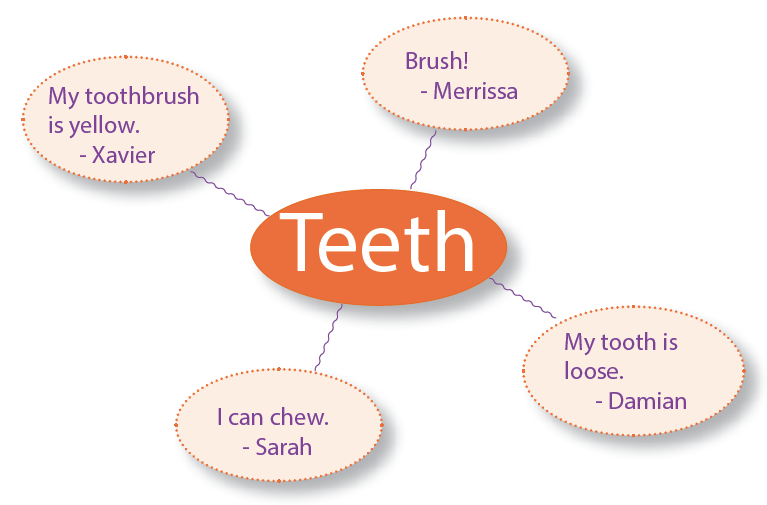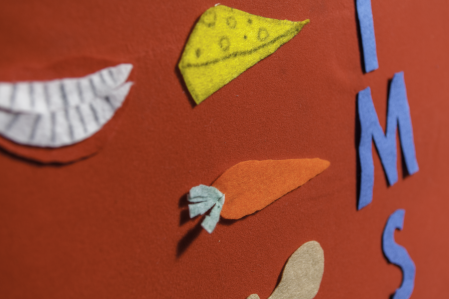Baby Teeth are Important – First Visit
Supplies and Preparation
- Copy of “Let’s Talk Teeth”
For Extending the Learning:
- “Cavity Free Kids: My Oral Health Goals”
Print PDFs:

Instructions
Starting the Conversation
- When I say oral health, what comes to mind? What about baby teeth?
- Do you know what causes cavities?
- Today we’re going to talk about baby teeth—why they are important, what causes cavities, and what cavities look like.
- We’re also going to talk about your families oral habits and set goals.
- There are lots of things we do to take care of our baby’s teeth and mouth.
Parent/Child Activities
1. Talk with the parent and child about why baby teeth are important.
- You may have heard someone say “they’re just baby teeth—don’t worry about taking care of them, they’re going to fall out.”
- The truth is that baby teeth are important. Ask the parent to tell you why baby teeth are important. Answers include:
- They help children smile, eat, and form words.
- They hold a healthy space for adult teeth.
- Also, pain caused by cavities in baby teeth can be very intense and can have a negative impact on children, including making it difficult for them to eat, get enough sleep, behave, pay attention in school, and learn to speak.
2. Talk with the parent and child about what causes cavities.
- The combination of the germs in our mouths and the foods high in sugar and carbohydrates (like chips, crackers, and white bread) and drinking sugary drinks (soda pop, juice, and sports drinks) causes an acid that attacks teeth. Repeated acid attacks cause cavities.
- Did you know that it’s possible to pass cavity causing germs from mom (or caregiver) to baby through kissing, sharing utensils, or by putting baby’s pacifier in mom’s mouth? It’s true!
- The bad news? Cavities are a big problem—tooth decay is the number one chronic disease of early childhood.
- Tooth decay can look like white, brown, or black spots on the teeth. The backside of the upper front teeth is often the first place that shows signs of early decay.
- The good news? Cavities are almost entirely preventable and can be avoided by limiting continual snacking, drinking water instead of juice/soda, brushing/flossing, and by making sure mom doesn’t have active tooth decay that she can pass to her baby.
3. Set oral health goals with the parent.
- Use the Let’s Talk Teeth questionnaire and the Let’s Set Goals sheet to set goals with the family and discuss which goal they’d like to start working on first.
- First, help the parent answer the questions on Let’s Talk Teeth.
- Then, review and discuss the parent’s answers with her. Work with her to identify areas she’s interested in improving.
- Choose oral health goals on the Let’s Set Goals sheet that align with the areas she is interested in improving.
- Discuss with the family which goal they would like to address first. Make a plan to talk about that goal at the next home visit or soon after.
Extending the Learning
Baby Teeth Chant
Baby teeth, baby teeth
Chew and smile
Stay strong and bright for a long, long while
Baby teeth, baby teeth
To keep you clean and strong
I’ll brush and floss you every day
Baby teeth, baby teeth
Are you ready to come out today?
Let’s count along…
One, two, three, four, five, SIX!
Closing
- What questions do you have about baby teeth or cavities?
- Did anything we talked about today surprise you? What and why?
- What are you looking forward to talking about next? Is there anything you’re not looking forward to discussing?




